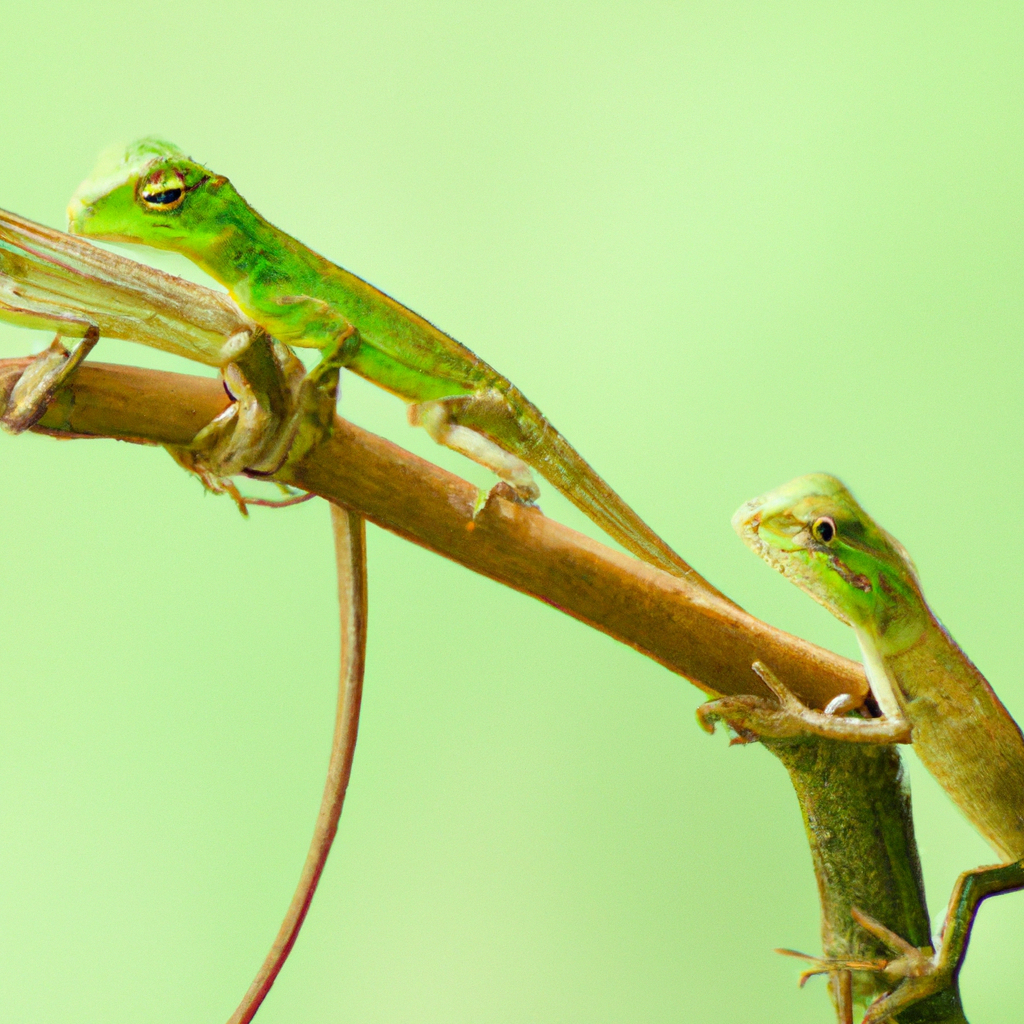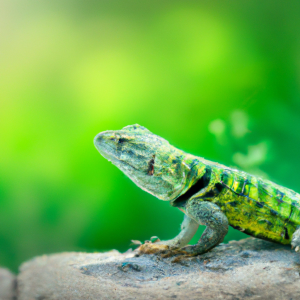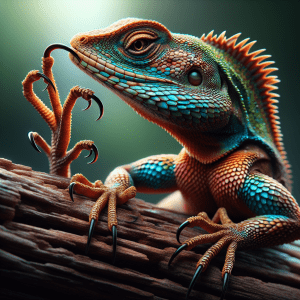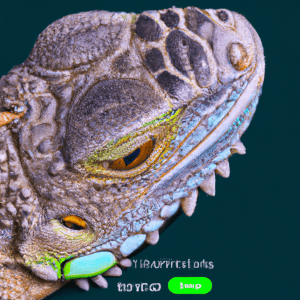Introduction to Lizard Daily Care Routine
Alright, did you know that lizards have different care requirements compared to other pets like cats or dogs? Yeah, it’s pretty fascinating! When it comes to setting up a daily care routine for your scaly friend, there are some unique factors to consider.
First off, choosing the right habitat is crucial for your lizard’s well-being. You’ll want to create an environment that mimics their natural habitat as closely as possible. This means providing the right type of substrate, temperature gradients, and hiding spots for your lizard to feel secure.
Feeding your lizard is another interesting aspect of their care routine. Depending on the species, lizards have specific dietary needs that may include live insects, fruits, or vegetables. It’s like being a chef for your reptilian buddy, preparing a menu that meets their nutritional requirements.
Now, let’s talk about daily hygiene and grooming practices for lizards. Did you know that some lizards shed their skin regularly? It’s a natural process for them to grow and stay healthy. You might need to provide a humid hide or mist their enclosure to help with shedding.
Maintaining proper lighting and temperature control is also essential for your lizard’s health. Lizards are ectotherms, which means they rely on external heat sources to regulate their body temperature. By setting up a proper lighting and heating system, you can ensure that your lizard stays comfortable and active.
So, there you have it – a sneak peek into the world of lizard daily care routines. It’s a whole new adventure, caring for these unique creatures, but with the right knowledge and commitment, you can provide a happy and healthy life for your scaly companion. Stay tuned for more tips and tricks on how to be the best lizard parent out there!
Choosing the Right Habitat for Your Lizard
Did you know that the type of habitat you choose for your lizard can significantly impact its health and happiness? It’s true! Lizards have specific needs when it comes to their living environment, and getting it right is crucial for their well-being.
When setting up your lizard’s habitat, you have to consider factors such as the size of the enclosure, the substrate, lighting, temperature, and humidity levels. Each of these elements plays a vital role in creating a comfortable and suitable home for your scaly friend.
For instance, certain lizard species require more vertical space to climb and explore, while others prefer a larger ground area for roaming. By understanding your lizard’s natural habitat and behavior, you can replicate a similar environment in captivity to ensure its physical and mental stimulation.
Moreover, different types of lizards have specific temperature and humidity requirements based on their natural habitat. Some lizards, like bearded dragons, need a basking spot with high temperatures to regulate their body temperature effectively. On the other hand, tropical species may require higher humidity levels to mimic their native rainforest conditions.
It’s fascinating to see how each lizard species has its unique preferences and needs when it comes to their habitat. By providing the right setup, you can help your pet lizard thrive and lead a happy, healthy life.
So, the next time you’re setting up a habitat for your lizard, remember to consider these interesting facts and trivia to create a space that closely resembles its natural home. Your lizard will thank you for it with its vibrant colors, active behavior, and overall well-being.
Feeding Guidelines for Pet Lizards
You know, feeding your pet lizard might seem straightforward, but there are some important guidelines to keep in mind to ensure their health and happiness. When it comes to feeding your lizard, variety is key. Just like us, lizards need a balanced diet to thrive.
One practical tip I always follow is to offer a mix of live insects, such as crickets, mealworms, and dubia roaches, along with fresh fruits and vegetables. This diversity not only provides essential nutrients but also keeps mealtime interesting for your scaly friend.
Another crucial aspect is understanding your lizard’s specific dietary needs. Different species have different preferences and requirements when it comes to food. For example, herbivorous lizards like iguanas will predominantly eat plant matter, while insectivorous lizards like bearded dragons require a diet rich in insects.
It’s also important to consider the size of the prey you offer. Feeder insects should be appropriately sized for your lizard to prevent choking or digestive issues. Additionally, dusting the insects with calcium and vitamin supplements can help ensure your lizard is getting all the necessary nutrients.
Remember, overfeeding can be just as harmful as underfeeding. Lizards have varying metabolisms, so it’s essential to monitor their weight and adjust their feeding schedule accordingly. Offering appropriately sized meals a few times a week is usually sufficient for most adult lizards.
By following these practical feeding guidelines and tailoring your lizard’s diet to their specific needs, you’ll be well on your way to providing them with a nutritious and balanced diet. A well-fed lizard is a happy lizard, after all!
Daily Hygiene and Grooming Practices
Did you know that lizards are meticulous groomers, often engaging in self-cleaning behaviors to keep their skin and scales healthy? When it comes to daily care routines for your pet lizard, maintaining proper hygiene and grooming practices is essential. Just like how we humans shower and brush our teeth daily, lizards also have their own grooming rituals to ensure they stay clean and healthy.
Imagine your pet lizard basking under its heat lamp, lazily stretching out its limbs, and then proceeding to meticulously clean itself with its tongue. It’s a fascinating sight to behold! Lizards use their tongues to lick their bodies and remove any dirt, debris, or shed skin. This self-grooming behavior not only keeps them looking sharp but also helps prevent skin infections and other health issues.
When you’re establishing a daily care routine for your pet lizard, make sure to observe their grooming habits. If you notice any abnormalities like excessive shedding, stuck shed, or skin discoloration, it may be a sign of an underlying health issue that requires attention. Providing a shallow dish of water for your lizard to soak in can also help with hydration and facilitate the shedding process.
Remember, while lizards are quite skilled at self-grooming, they may still benefit from occasional baths or gentle cleaning sessions to maintain their skin and scales in top condition. Avoid using harsh chemicals or soaps, as lizards are sensitive to artificial substances. Instead, opt for lukewarm water and a soft cloth to gently wipe away any debris.
By incorporating regular grooming sessions into your lizard’s daily care routine, you’re not only promoting their physical well-being but also strengthening the bond between you and your scaly companion. So, the next time you catch your pet lizard engaged in a grooming session, appreciate the effort they put into looking their best and staying healthy!
Importance of Proper Lighting and Temperature Control
Do you know that proper lighting and temperature control are crucial for the health and well-being of your pet lizard? It’s not just about turning on a light bulb and calling it a day. Just like us, lizards require specific lighting and temperature conditions to thrive.
When setting up your lizard’s habitat, you need to consider factors like UV lighting to help them metabolize calcium and maintain healthy bones. Lizards also rely on temperature gradients within their enclosure to regulate their body temperature effectively.
Imagine if you were stranded in a place that was too hot or too cold for your comfort. That’s how important the right temperature is for your pet lizard. Providing them with a basking spot where they can soak up warmth and a cooler area to retreat to when they need to cool down is essential for their overall well-being.
Another interesting fact is that different species of lizards have varying requirements when it comes to lighting and temperature. For example, desert-dwelling lizards may need higher temperatures and more intense lighting compared to those from tropical regions. It’s like trying to recreate their natural habitat within your own home.
So, the next time you’re setting up your lizard’s enclosure, think of it as creating a mini ecosystem tailored to their specific needs. By understanding and implementing the right lighting and temperature controls, you’re not only ensuring their physical health but also providing them with a comfortable and stimulating environment to thrive in.
Handling and Socialization Tips for Lizards
Let me tell you about handling and socializing with your pet lizard. It’s a crucial aspect of their care routine that can make a big difference in their well-being.
Did you know that lizards have their unique personalities? Just like us, they have preferences and behaviors that make them individuals. Some lizards may be more social and enjoy interaction, while others may be more reserved. Understanding your lizard’s temperament can help you tailor your handling and socialization approach to suit their needs.
When it comes to handling your lizard, it’s essential to start slow and gentle. Remember, lizards are not like cuddly pets that enjoy being picked up and hugged. They are more independent creatures that value their personal space. Gradually introduce handling by allowing your lizard to become accustomed to your presence and touch.
Another tip is to always support your lizard’s body properly when handling them. Lizards can be delicate creatures, and improper handling can cause stress or even harm to them. Make sure to support their body and never grab them by their tail, as this can lead to injuries.
Socializing your lizard involves creating a positive and enriching environment for them. Spend time near their habitat, talk to them softly, and offer treats to form a bond. It’s all about building trust and a sense of security with your pet lizard.
Remember, each lizard is unique, so take the time to understand your pet’s preferences and comfort levels when it comes to handling and socialization. By incorporating these practices into your lizard’s daily care routine, you can strengthen your bond with them and ensure their happiness and well-being.
Health Check and Common Health Issues in Lizards
Alright, buckle up, because we’re diving into the wild world of lizard health check-ups! Now, I know what you’re thinking – how on earth do you give a lizard a check-up, right? Well, let me tell you, it’s not as simple as asking them to stick out their tongue and say “ahh.”
Picture this: you’re all geared up like a mini lizard doctor, ready to give your scaly friend a once-over. First things first, you need to gently handle your lizard and check for any signs of distress or unusual behavior. Trust me, lizards have their ways of letting you know if something’s off – whether it’s a sudden lack of appetite or a grumpy tail flick.
Next up, it’s time for the physical exam. Now, I’m not talking about making your lizard do jumping jacks or anything like that. Just a gentle inspection of their body for any lumps, bumps, or skin issues. Think of it as a spa day for your lizard – minus the cucumber eye masks.
But here’s the kicker – the hardest part of the health check-up is checking their eyes. Yep, you heard me right. Trying to get a lizard to hold still while you peek into their tiny little eyes can be quite the challenge. It’s like playing a game of “I spy” with a wiggly, squirming contestant.
And let’s not forget about their teeth and claws! Just like us humans, lizards need to maintain good dental hygiene. Imagine trying to brush a lizard’s teeth – now that’s a sight to see! And don’t even get me started on trimming their sharp little claws. It’s like giving a tiny dinosaur a manicure.
So, there you have it – the quirky world of giving your lizard a health check-up. Remember, a happy and healthy lizard is a happy lizard owner. And who knows, maybe your scaly friend will reward you with a little lizard dance of joy after their check-up!
Creating a Safe and Enriching Environment for Your Lizard
Did you know that creating a safe and enriching environment for your pet lizard is not only beneficial for their well-being but also essential for their overall health? Providing a habitat that mimics their natural environment can have a significant impact on their mental and physical health. Lizards are highly sensitive creatures that thrive in environments that closely resemble their natural habitats. By incorporating elements such as rocks, branches, and hiding spots in their enclosure, you can create a stimulating and comfortable space for your lizard to explore and feel secure.
Ensuring that your lizard has a safe and enriching environment goes beyond just aesthetics; it plays a crucial role in their overall health and happiness. A well-designed habitat can help reduce stress levels, encourage natural behaviors, and provide opportunities for exercise and mental stimulation. Additionally, a safe and enriching environment can help prevent common health issues such as obesity, respiratory problems, and skin conditions in pet lizards.
So, when setting up your lizard’s habitat, consider incorporating elements that reflect their natural habitat, provide opportunities for exercise and mental stimulation, and prioritize their safety and comfort. By creating a space that meets their physical and psychological needs, you are not only enhancing their quality of life but also fostering a strong bond between you and your beloved pet lizard. Remember, a happy lizard is a healthy lizard!
Tips for Monitoring and Maintaining Your Lizard’s Health
Imagine you’re taking care of your pet lizard, ensuring its health and well-being on a daily basis. It may seem like a simple routine, but have you ever thought about the broader impact of maintaining your lizard’s health? When you prioritize your lizard’s care, you’re not only ensuring its individual well-being but also contributing to the conservation and protection of lizard species as a whole.
By monitoring and maintaining your lizard’s health, you’re playing a crucial role in preserving biodiversity and supporting the delicate balance of ecosystems. Healthy lizards are essential members of their ecosystems, contributing to pest control, seed dispersal, and overall ecological stability. Your commitment to providing proper care for your pet lizard extends beyond your home and has a ripple effect on the environment.
Additionally, by following a consistent daily care routine for your lizard, you’re setting a positive example for other reptile owners and enthusiasts. Sharing your knowledge and experiences with lizard care can inspire others to prioritize the well-being of their pets and promote responsible pet ownership practices. Your dedication to your lizard’s health can influence a community of lizard lovers to come together and advocate for the welfare of these fascinating creatures.
As you engage in monitoring and maintaining your lizard’s health on a daily basis, remember that your efforts have far-reaching implications beyond the walls of your terrarium. You’re not just caring for a single lizard; you’re contributing to the larger tapestry of biodiversity and conservation. So, continue to be attentive, proactive, and compassionate in your daily care routine, knowing that your actions have a meaningful impact on the world around you.
Implementing a Successful Lizard Daily Care Routine
Let me tell you about creating a safe and enriching environment for your lizard. It’s like curating a mini jungle gym for your scaly friend! Just imagine designing a lizard paradise right in your home.
When I first started setting up my bearded dragon’s habitat, I wanted to make sure it felt like a cozy retreat for him. I added various branches for climbing, rocks for basking, and even a little lizard hammock that he absolutely adores. It was such a joy to see him exploring his new space and making himself at home.
Did you know that providing a stimulating environment for your lizard is not just about aesthetics? It also plays a crucial role in their overall well-being. Lizards, like humans, need mental and physical stimulation to stay healthy and happy. By creating an enriching habitat, you’re giving your lizard the opportunity to exhibit natural behaviors, stay active, and reduce stress levels.
One practical tip I learned along the way is to incorporate a variety of textures and hiding spots in the habitat. This allows your lizard to engage in natural behaviors like climbing, digging, and exploring. Plus, having different textures to walk on can help keep their claws trimmed and their muscles active.
Have you ever thought about how your lizard’s habitat reflects their natural environment in the wild? It’s fascinating to consider how mimicking their natural habitat can benefit their physical and mental health. By incorporating elements like rocks, plants, and hiding spots, you’re providing a sense of security and comfort to your lizard.
So, next time you’re setting up your lizard’s habitat, think beyond just the basics. Get creative, add personal touches, and watch as your lizard thrives in their own little paradise. Remember, a happy lizard is a healthy lizard!




